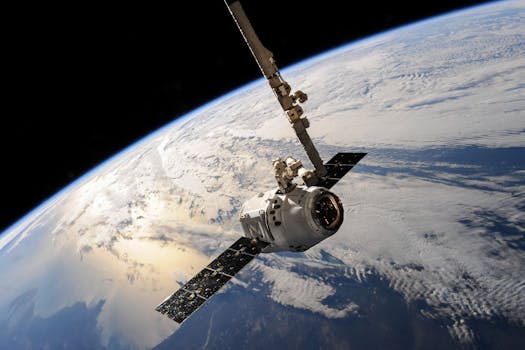The Future of Satellites: Revolutionizing Global Connectivity

The future of satellites is a topic of great interest and importance, as these space-based systems are poised to revolutionize global connectivity. With the increasing demand for faster and more reliable communication services, satellites are becoming increasingly important for navigation, communication, and remote sensing. Future of satellites is an exciting and rapidly evolving field, with new technologies and innovations emerging every day.
One of the key areas of development in the future of satellites is the use of small satellites, also known as CubeSats. These small satellites are designed to be low-cost and compact, making them ideal for a wide range of applications, including Earth observation, communication, and scientific research. Small satellites are also being used for the development of constellations, which are networks of satellites that work together to provide global coverage and services.
Another area of development in the future of satellites is the use of advanced propulsion systems. Traditional satellites use chemical propulsion systems, which are heavy and inefficient. However, new propulsion systems, such as electric propulsion and ion engines, are being developed, which are more efficient and can provide greater maneuverability. These advanced propulsion systems will enable satellites to change their orbits and trajectories more easily, making them more versatile and useful.
In addition to these technological advancements, the future of satellites is also being shaped by changes in the regulatory environment. The Federal Communications Commission (FCC) is working to create a more favorable regulatory environment for satellite development, by streamlining the licensing process and reducing the costs associated with launching and operating satellites. This will make it easier for companies to launch and operate satellites, which will help to drive innovation and investment in the industry.
The future of satellites is not just about technological advancements, but also about the potential impact on society. Satellites have the potential to bridge the digital divide, by providing internet access to remote and underserved communities. They can also be used for disaster response and recovery, by providing critical communication services and imagery. Furthermore, satellites can be used for environmental monitoring, by tracking climate change, deforestation, and other environmental issues.
In the section of space technology, the future of satellites is closely tied to the development of other space-based systems, such as space stations and space telescopes. These systems will provide a platform for scientific research, experimentation, and exploration, and will help to advance our understanding of the universe. The future of satellites is also closely tied to the development of space tourism, which is becoming an increasingly important sector of the space industry.
Finally, the future of satellites is not without its challenges. One of the main challenges is the issue of space debris, which is a growing concern for the satellite industry. Space debris can cause collisions and damage to satellites, which can have serious consequences for the environment and for human safety. Another challenge is the issue of cybersecurity, which is becoming an increasingly important concern for satellite operators. Satellites are vulnerable to cyber attacks, which can compromise their systems and data, and can have serious consequences for national security and the economy.
